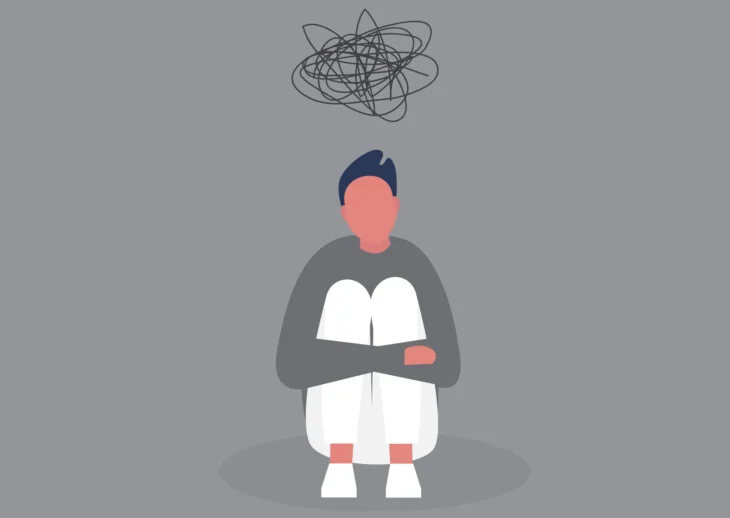As joyful and ultimately rewarding as parenting can be, it is also extremely stressful. You worry about getting it right, and you worry about passing any anxiety you are feeling onto your child. You also worry about them. Are they safe? Are they getting the best education possible? Are you giving them enough independence or too much? Are you supporting them enough? These understandable concerns can spill over into your behavior around your child, but the problem with this is that being around an anxious parent can make them feel destabilized even when your worries are coming from a place of love and concern. The tips below can help you navigate this difficult balance.
Prevention

Source: additudemag.com
Of course, the best way to avoid anxiety is to avoid whatever triggers it in the first place. This isn’t always possible, but the first step is to pay attention and notice what causes you more stress. For example, maybe there is a certain parenting forum that always makes you feel worse rather than better after you visit it. Perhaps when your kid has the sniffles, you have a bad habit of going down a medical research rabbit hole online and catastrophizing. Maybe taking the kids grocery shopping with you is just too much, and it’s better for everyone if your partner or someone else can look after them.
Learning to set boundaries with yourself can not only help prevent negative emotions before they get started but can also provide you with useful coping skills and help you feel more in control. In addition, anticipating problems you might have with situations in which your kids are involved and removing either you or them from the equation can help ensure that you do not signal to them that these are inherently upsetting situations. You do not want them to get the idea that having the sniffles or going to the grocery store is an inherently anxiety-provoking situation.
Getting Help

Source: 19thnews.org
At the other end of the spectrum is seeking professional assistance, and this can be done as needed along with any of the other suggestions included here. Counseling can be helpful in many cases. You might also want to try prescription beta-blockers. GoKick.com can help you in finding the right solution that can relieve many of the physical symptoms of anxiety, such as a racing heart and shaking hands. You can use these if you know you have a big moment or stressful situation coming up, when there are unavoidable triggers ahead or when your usual coping techniques do not work. You may also want to look into support groups online or offline.
Be a Role Model

Source: scholastic.com
One way to approach stress is to think about how you can be a good role model for your kids. This can involve several different approaches. In some situations, you may want to talk to your child about your anxiety. It’s important that you don’t make them think they are responsible for managing your emotions if you take this route. Instead, you should talk them through what you are feeling in a neutral way. For example, you might say to them that you are feeling nervous about a particular situation. However, you can also explain that the thing you are worried about, such as doing a poor job at a presentation at work, are not really rational because you have spent time preparing and you know the subject you will be talking about. This gives your child the opportunity to observe you using logic to manage stress in certain types of situations.
There may also be times when your anxiety gets the better of you, and you react in an inappropriate way. For example, perhaps you yelled at or snapped at your child while you were trying to get everyone ready and out of the house in the morning. You can explain to your child that you did that because you felt overwhelmed, and you can talk about better ways of managing those feelings. This doesn’t excuse a situation in which you possibly took out your emotions on someone else, especially your children.
However, it does open a door for you to talk about the fact that it’s okay to display negative emotions sometimes. You could then discuss better ways that you could have managed the situation. Again, it is important that you remain in a parental role here and do not burden your child. Instead, let them feel comfortable and autonomous in thinking up alternate scenarios.
With a balance of the two above approaches, children can get two messages. One is that it’s possible to manage negative emotions through rational self-talk. The other is that it’s okay to feel and express anger or fear, but you should make an effort to do so appropriately.
Mindfulness

Source: mindful.org
Another technique that you can use yourself and teach to your kids is mindfulness. There are many different techniques that can help you place yourself in the moment and calm your emotions. One is to pay attention to and work on your breathing. Taking deep breaths from your stomach can help prevent you from breathing in a short, shallow way. The latter can set off a chain reaction of other physical sensations that can make you feel more panicky. If you tend to tense up when you are worried, another technique that you can use is deliberately tensing and releasing your muscles. This can be especially fun to teach to your children, who may become so distracted with tightening and releasing their toes or fists that they forget what they were worried about in the first place.
Yet another approach is to place yourself in the moment, paying attention to everything around you. This could mean focusing on one sense, such as sound. It could mean focusing on a single point of stimulation, such as a bird hopping in the grass nearby. It could mean focusing on slow, steady breathing. The idea is to realize that you are in the present, this is the only moment that exists, and that you don’t have to worry about the past or the future in this present moment.
